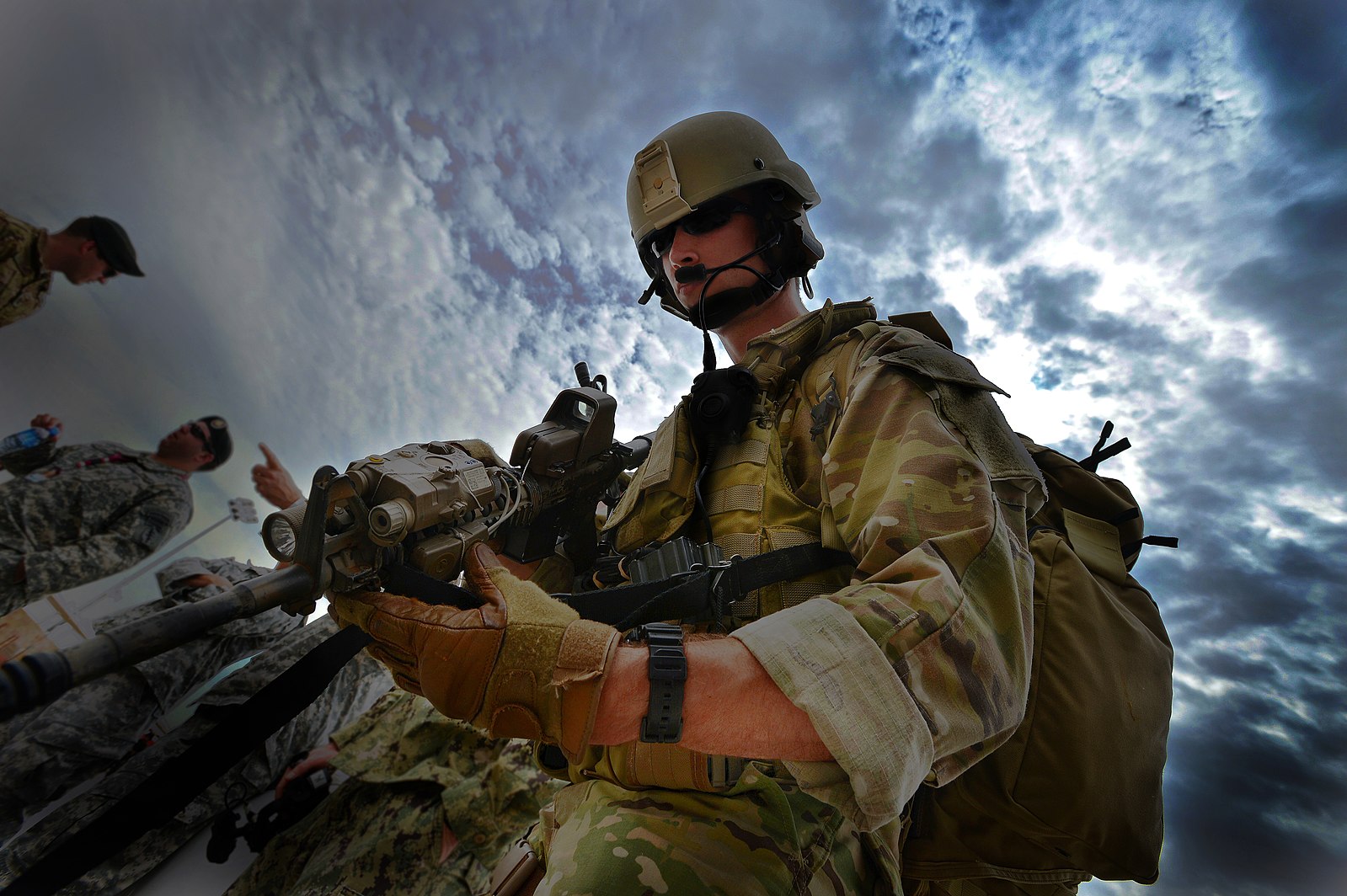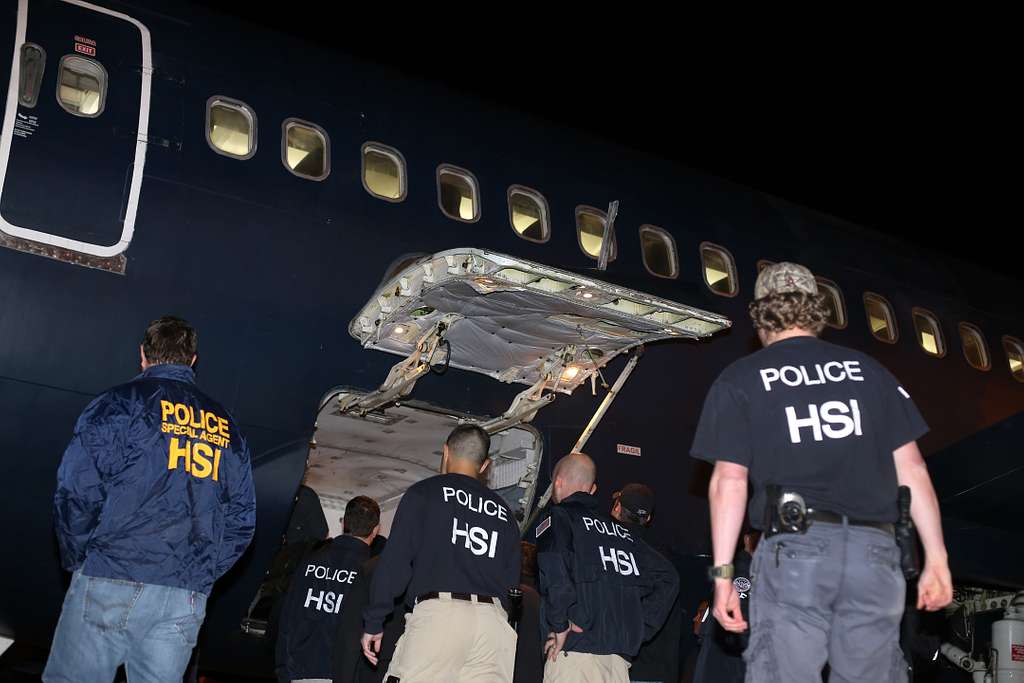Law and the Biden Administration’s Response to the Attack in Jordan

Published by The Lawfare Institute
in Cooperation With

This past weekend’s fatal attack on the Tower 22 military facility in Jordan—which killed three U.S. service members and left more than 40 injured—may prove to be a tipping point for U.S. military activities in the region. The incident follows the surge of recent attacks by Iran-backed militias in Iraq and Syria, which have framed their actions as a response to U.S. support for Israel’s controversial military campaign in Gaza—itself a reaction to the Oct. 7, 2023, massacre perpetrated by Hamas, another recipient of Iranian support. While an alliance of militias operating under the collective banner of the Islamic Resistance of Iraq has claimed responsibility for the Tower 22 attack, the Biden administration has made clear that it ultimately holds the Iranian government responsible, despite the latter’s claims that it was not directly involved.
President Biden and his senior policy advisers have promised a “tiered” military response most likely involving “several rounds of action.” But at the same time, they have sought to signal a desire not to escalate further to Iran. Such efforts may have borne fruit yesterday, as the leadership of Kata’ib Hezbollah—one of the most prominent Iran-backed militias in Iraq and a central participant in the Islamic Resistance of Iraq—declared a cessation of operations targeting the United States, at the apparent urging of their backers in Iran’s Islamic Revolutionary Guard Corps (IRGC). Whether this represents a genuine cease-fire or a cynical stalling technique remains to be seen, as does its impact on the Biden administration’s planned military response, which has not yet gotten underway.
If and when the Biden administration pursues a military response, its actions may look different from what it has done in the past. Just days before the Tower 22 attack, the Biden administration confirmed a significant shift in its legal justification for military responses to attacks by Iran-backed militias in Iraq and Syria, one that potentially clears the way for a more substantial and sustained U.S. military response. Yet the role played by the Tower 22 military facility targeted in the most recent attack—specifically, its role as a logistics hub for another U.S. military installment in al-Tanf, Syria—may make it an awkward fit for this revised legal justification. And other legal and policy considerations—including increasingly vocal objections by the Iraqi government—are likely to set external constraints on how the Biden administration can respond if it wishes to return to something resembling the status quo ante.
The Return of a Permissive War Powers Theory
Attacks by Iran-backed militias and associated groups are a familiar problem for the United States, at least in nearby Iraq and Syria. U.S. diplomatic and military personnel regularly endured rocket attacks from Iran-backed militias (among other groups) through the U.S. troop withdrawal in late 2011 and sporadically afterward. The pace of these attacks died down during the counteroffensive against the Islamic State in Iraq and Syria, when the United States and Iran found themselves briefly aligned. But they picked up again in both Iraq and Syria after the Trump administration initiated its “maximum pressure” sanctions campaign against Iran. In the case of Iraq, this ultimately led the Trump administration to sharply curtail the U.S. presence there, including by closing the U.S consulate in Basrah, Iraq.
These attacks have continued into the Biden administration at a somewhat reduced pace, one that has often ebbed and flowed depending on the broader U.S. relationship with Iran. But since Hamas’s Oct. 7 massacre and the onset of Israel’s controversial military operation in Gaza, the pace of attacks has increased dramatically: While fewer than 120 attacks by Iran-backed militias on U.S. forces took place in Iraq and Syria from 2021 to October 2023, more than 160 have now been recorded just from October 2023 to present.
Despite the frequency of these attacks, fatalities have been relatively uncommon. Prior to the attack in Jordan, attacks by Iran-backed militias had killed three U.S. military contractors and two U.S. service members since the beginning of 2020, according to Combating Terrorism Center data compiled from publicly available sources. This largely reflects the fact that U.S. facilities in Iraq and Syria are often hardened and equipped with sensors and countermeasures that allow them to avoid the deadliest consequences of most such attacks. But the same is not always true of U.S. facilities in other countries where attacks are not as common, making even more limited military operations there potentially far deadlier. In the present case, the Tower 22 facility reportedly had defenses against drone and rocket attacks in place, but they failed after the enemy drone was confused with a friendly one.
In 2017, U.S. troops deployed to Syria to combat the Islamic State began to take military action to defend both themselves and local partner forces from attacks by third parties, including Iran-backed militias operating there. In late 2019, the Trump administration extended this practice to Iraq as well, becoming the first administration to resume U.S. military operations in Iraq without the permission of the Iraqi government since the U.S. withdrawal. After the initial salvo of airstrikes led to violent protests at the U.S. Embassy in Baghdad, the Trump administration targeted Qassem Soleimani, the Iranian general in charge of the Islamic Revolutionary Guard Corps’s (IRGC’s) paramilitary Quds Force and a lead interlocutor with Iraq-based militias, with an airstrike in Baghdad that also killed the leader of Kata’ib Hezbollah. Iran itself then retaliated a few days later with a ballistic missile attack on al-Asad Airbase, an Iraqi military base housing U.S. soldiers, that miraculously killed no one. While the Trump administration did not pursue any further military action directly against Iran, it continued to pursue airstrikes against Iran-backed militia targets in both Iraq and Syria.
As a matter of U.S. domestic law, the Trump administration premised most of these military actions on the 2001 and 2002 Authorizations for Use of Military Force (AUMFs), the same two statutes that the executive branch has used to authorize ongoing U.S. operations against the Islamic State. Specifically, the Trump administration argued that in authorizing the “necessary and appropriate” use of force against the Islamic State and other targets, Congress also authorized the use of military force “to defend U.S. or partner forces as they pursue those missions[,]” including from third parties—a legal theory often referred to as “ancillary self-defense,” though it is sometimes also called “collective self-defense” in line with relevant operational guidelines. Hence, in the executive branch’s view, the AUMFs authorized military action against Iran-backed militias insofar as it was necessary to defend U.S. and partner forces involved in the ongoing counter-Islamic State mission in Iraq and Syria.
The strike against Soleimani, however, was a notable departure from this pattern. After some initial confusion, the Trump administration ultimately justified it on the basis of the president’s inherent Article II authority and as a direct application of the 2002 AUMF relating to Iraq. This shift in argument suggests that the Trump administration viewed Soleimani and the IRGC he headed as threats to Iraqi democracy and stability of the sort that the 2002 AUMF authorizes the use of force against, at least as read by the executive branch. It may also suggest that executive branch lawyers thought that the nexus to defending personnel involved in counter-Islamic State operations was not as strong as in other cases.
While it adopted a less confrontational posture, the Biden administration continued to use sporadic military force against Iran-backed militias once it entered office in response to ongoing attacks. Before the Oct. 7 massacre, the United States conducted at least four military operations targeting Iran-backed militias in Iraq and Syria, each of which it reported to Congress: three on infrastructure used by these organizations in Syria and one on facilities in both Iraq and Syria. In only one of these cases was the U.S. attack seemingly in direct response to a specific attack on U.S. forces; instead, most of the operations responded to spates of attacks on U.S. forces over the preceding weeks and months.
As a legal matter, the Biden administration framed each of these actions as exercises of the president’s authority under Article II of the Constitution, without relying on any statutory authority like the AUMFs. This was most likely a response to criticisms that the Trump administration’s ancillary self-defense argument stretched the AUMFs too far, though executive branch lawyers made clear in congressional testimony that they continued to see ancillary self-defense as a valid reading of the AUMFs. The executive branch maintains that Article II authorizes the president to take military action wherever doing so is in the U.S. national interest and the “anticipated nature, scope, and duration” does not run a serious risk of turning into a major armed conflict. This legal theory is arguably less constraining than ancillary self-defense, as it does not require a nexus to defending U.S. and partner forces. But it comes with certain procedural constraints, as the 1973 War Powers Resolution requires that the president report any uses of military force that lack congressional authorization to Congress within 48 hours and end them within 60 to 90 days if Congress does not approve. In an apparent effort to avoid this latter consequence, the Biden administration—borrowing a practice from prior administrations—has treated these sets of airstrikes as separate one-off operations, giving each its own 48-hour report and, implicitly, its own 60- to 90-day clock.
Since the Oct. 7 massacre, however, the spike in the number of attacks from Iran-backed militias has prompted more U.S. strikes in response. The United States has reported seven military actions on Iran-affiliated militias in Iraq and Syria since Oct. 7—three in Syria and seemingly four in Iraq, though the location of one of the attacks that appears to have been in Iraq was not officially reported by the Biden administration. Several of these operations expressly targeted facilities associated with the IRGC, not just affiliated militias, suggesting that the Biden administration is increasingly willing to treat the IRGC and perhaps Iran itself as a threat to U.S. personnel and target them with a military response. In addition, U.S. troops have proved more willing to quickly take action against Iran-backed militia forces that have perpetrated or threatened imminent armed attacks against them, a practice the executive branch argues is not covered by the requirements of the War Powers Resolution.
While the legal justification for the first several of these post-Oct. 7 military actions was the same as earlier efforts, more recent reports have indicated a shift in legal theory. Beginning in November 2023, the 48-hour reports provided to Congress by the Biden administration began to include a reference to the fact that the military action in question was being taken in defense of U.S. personnel “who are in Iraq and Syria conducting military operations pursuant to the 2001 Authorization for Use of Military Force[,]” suggesting a possible return of the ancillary self-defense argument. This was seemingly confirmed in later reports filed on Jan. 5 and Jan. 25, both of which also asserted that the president was acting “in accordance with” the 2001 and 2002 AUMFs.
This shift back to the ancillary self-defense argument employed by the Trump administration almost certainly reflects operational considerations. While Article II authority can be used for a broader array of purposes than ancillary self-defense, the 60- to 90-day cutoff imposed by the War Powers Resolution presents a serious constraint for longer and more sustained military operations. The intermittent pacing that the Biden administration has used to evade this limitation so far is in turn contingent on being able to bundle responsive U.S. military operations in ways that limit their pace and duration. For these reasons, the decision to return to an ancillary self-defense argument suggests that, even before the Tower 22 attack, the Biden administration believes that the tempo of operations targeting Iran-backed militias is likely to increase past the point that they can be spaced and intermittently reported credibly—and that the resulting hostilities may well last longer than 60 to 90 days. (Notably, it may also mean that the Biden administration may no longer believe it is legally obligated to provide 48-hour reports to Congress by the War Powers Resolution, though it has thus far continued to do so.)
Ironically, however, the attack on Tower 22 may be a poor predicate for an ancillary self-defense argument. The facility’s only clear nexus to counter-Islamic State efforts is the fact that it is reportedly used as a logistics hub for al-Tanf, a U.S.-occupied position in Syria near the intersection with the Iraqi and Jordanian borders. Experts have questioned whether the U.S. mission at al-Tanf is truly to counter the Islamic State as the executive branch claims, not least because the Islamic State has not operated in the vicinity for a very long time. Some have pointed to what seems to be the more salient U.S. objective at al-Tanf: to monitor and disrupt Iran-backed efforts to build a supply route between their proxies in Lebanon and Iraq through Syria. Others have noted that the U.S. presence may also provide some added security to the nearby Rukban refugee camp, which has been targeted by the Assad regime and its supporters. Whatever the actual motivation, that the executive branch is already on the record justifying the U.S. presence at al-Tanf as a counter-Islamic State mission means that the step to ancillary self-defense is likely to be a relatively easy one. But this argument is premised on a foundation that is already questionable, which may raise more uncomfortable questions moving forward.
There are other arguments the Biden administration could deploy to avoid the 60- to 90-day cutoff for some or all of the military operations it chooses to pursue. It could argue that the War Powers Resolution does not apply to one-sided air campaigns, as the Obama administration did in relation to its 2011 intervention in Libya. Alternatively, it might determine that the perpetrators of the Tower 22 attack are direct threats to Iraqi stability and are thus directly covered by the 2002 Iraq AUMF, as the Trump administration did in relation to Soleimani. Or it might contend that Congress (acting through the War Powers Resolution) cannot interfere with the president’s constitutional authority to act in the defense of U.S. military personnel who have come under attack, a possibility that the executive branch has repeatedly hinted at but never fully deployed. That said, all of these positions would be awkward ones for the Biden administration to adopt, given its prior expressions of concern over overbroad presidential claims of war powers and support for repealing the 2002 Iraq AUMF. For this reason, it seems more likely that the administration will continue to rely on the ancillary self-defense argument it has recently resurrected, supplemented perhaps by intermittent, self-contained military action under Article II—notified to Congress separately and treated as if it has an independent 60- to 90-day clock—where the nexus to a counter-Islamic State mission is lacking.
Whatever arguments it settles on, the return of ancillary self-defense strongly suggests that the Biden administration was already anticipating the possibility of pursuing more frequent and sustained military action against Iran-backed militias. The Tower 22 attack only seems to make this more likely.
Growing International Constraints
But even as the Biden administration has shifted to a more flexible domestic legal justification, other international legal and related policy considerations have emerged as possible constraints on U.S. military action. As it weighs possible military action against the Iran-backed militias believed to be responsible for the attack on Tower 22, the Biden administration may find that these international legal and policy considerations limit how—and particularly where—it may respond.
For almost a decade, the United States has justified its ongoing counter-Islamic State operations in Iraq and Syria as exercises of the inherent right of individual and collective self-defense recognized in Article 51 of the UN Charter—specifically, both individual self-defense and collective self-defense with Iraq at its request. Such self-defense is an exception to the usual prohibition international law puts on the use of force against (or within the territory of) another state without its consent. Where the United States or its personnel come under armed attack by Iran-backed militias or other third parties, this in turn provides grounds for a separate right of self-defense specifically against those groups, independent from counter-Islamic State operations. This view is reflected in the Biden administration’s 48-hour reports following its attacks against the militias in Iraq and Syria, each of which notes that the operation was a permissible exercise of the U.S.’s “inherent right of self-defense as reflected in Article 51 of the United Nations Charter.”
When exactly states may resort to self-defense is contested. Most states accept that the right to self-defense extends to the imminent threat of armed attacks against their territory, personnel, or nationals, but they disagree as to when it adheres. For its part, the United States evaluates imminence through a multifactor and context-specific lens that generally gives states a good deal of flexibility in responding to potential threats. Some other states may question whether attacks by Iran-backed militias constitute one of “the most grave forms of the use of force” necessary to trigger a right to self-defense, or whether the United States has “no reasonable means of redress” other than to use force—requirements that the International Court of Justice has attached to exercises of self-defense in the past. The United States, however, has long maintained that a use of force of any gravity can trigger a right to self-defense so long as the country exercising it has explored reasonably available alternatives to the use of force—a threshold that executive branch lawyers will most likely conclude has been satisfied in the case of attacks by Iran-backed militias.
As to what sort of military response is permitted, the United States agrees with most states that any response must be proportional as a matter of international law. But the United States has argued that proportionality should be evaluated against what steps are necessary to address the underlying threat. Particularly where hostile actors have demonstrated hostile intent and an ability to pursue further military action, such as through a pattern of prior attacks, the United States has argued that it can pursue quite substantial military action against the perpetrators of armed attacks in self-defense. This same logic seems likely to apply in the present case and may even reach beyond the militia groups that perpetrated the attack on Tower 22 to those who coordinated with them or knowingly facilitated their efforts.
The sum of these legal positions is that the United States generally maintains that it has a broad international legal right to act in its own self-defense against those who use or threaten imminent violence against it, to whatever extent is necessary to prevent a repeat of such attacks. For the Biden administration, this is not likely to be particularly constraining when it comes to responding to the Tower 22 attack, even if other states may not agree with its international legal assessment. The more difficult international legal issue is instead where the United States can pursue such action, given that states are generally prohibited from operating on or using military force on each other’s territories without their consent.
With regard to Syria, the United States has argued that it can pursue military operations in self-defense against the Islamic State on Syrian territory without the Assad regime’s consent on the grounds that the Assad regime has proved “unable or unwilling” to address the threat posed by the Islamic State on its own. This position has proved controversial and been rejected by a number of other states, though U.S. military allies generally accept it.
The same logic almost certainly extends to Iran-backed militias in Syria as well, who—unlike the Islamic State—are largely there at the Assad regime’s invitation. The Biden administration cited this theory in an early 48-hour report following its first attack against Iran-backed militias in Syria in February 2021 but has not explicitly referenced it in subsequent reports. Alternatively, as such groups are largely operating in Syria with the Assad regime’s permission and support, the United States might also be able to argue that Syria itself can be held responsible for those groups’ actions under international law, providing the United States with a right to act in self-defense against Syria itself. Either way, these factors have made Syria the easiest avenue for responsive U.S. military action, and the one the Biden administration has favored thus far. That said, Iran-backed militias also seem to be aware of this, as they have attempted to channel more of their operations and leadership structure through Iraq, as suggested by the Islamic Resistance of Iraq moniker many of them have begun to operate under.
A similar set of legal arguments apply to military operations against Iran-backed militias in Iraq, though the situation there has quite different policy ramifications. Since 2019, the United States has pursued operations against Iran-backed militias without the consent of—and often over vocal objections from—the Iraqi government. While it has never said as much expressly, the fact that the United States has chosen to act anyway suggests that it has most likely concluded that the Iraqi government is also unable or unwilling to address the threat posed to U.S. facilities and personnel—a conclusion arguably supported by the persistence of attacks on the U.S. diplomatic and military facilities, despite repeated objections from the Iraqi government (and without a clear and effective Iraqi governmental response). An alternate argument could also be premised on the fact that, as part of a broader (and largely unsuccessful) effort to reassert some control over the militias, the Iraqi government formally incorporated many of them into the state’s security forces, as part of an official Popular Mobilization Front (PMF). Even though these groups continue to operate with almost complete autonomy—and in ways contrary to official Iraqi law and policy—this legal relationship is arguably enough to make Iraq as a whole legally responsible for their actions under international law. Hence, the United States could in theory argue that it is acting in self-defense directly against Iraq, though any such suggestion is likely to be controversial both within Iraq and outside of it.
The United States clearly does not see a lack of Iraqi consent as a legal barrier to action against Iran-backed militias in Iraq. But unlike the Assad regime, Iraq’s consent does still matter for an array of other purposes, both legally and politically. In particular, the Iraqi government’s 2014 request for international assistance in combating the Islamic State is essential to U.S. claims that ongoing counter-Islamic State operations are being pursued at least in part in the collective self-defense of Iraq. While the United States could still pursue some such operations on the basis of individual self-defense, the Islamic State’s increasingly regional focus and limited global reach makes these arguments less credible as time goes on.
Perhaps more importantly, Iraq’s consent also remains a prerequisite for the approximately 2,500 U.S. troops who remain in Iraq. While they are primarily there to advise and assist Iraq’s own security forces, U.S. policymakers have described their presence as strategically important, both to prevent a potential Islamic State resurgence and to counterbalance Iranian influence. If that consent were rescinded, U.S. troops would either have to leave or find themselves in the unsavory position of being an unwelcome intruder on Iraq’s territory. Any legal arrangements in place to provide U.S. troops with legal protections would likely cease effect at that point, making those who remain vulnerable to domestic arrest and prosecution. And if the United States were determined to stay over the Iraqi government’s objections (as the Trump administration at one point suggested), it would find itself in the undesirable position of having to effectively reoccupy at least part of Iraq—a legally dubious action that promises to be extremely controversial, both in Iraq and at home.
Recent events have highlighted the fragility of this consent. After the Trump administration began airstrikes in Iraq in 2019—and particularly after the 2020 U.S. airstrike that killed Soleimani—Iraq’s parliament took a symbolic vote in support of expelling U.S. troops, and the Iraqi government pushed for negotiations with the United States that would lead to the withdrawal of U.S. troops. These negotiations ultimately ended with President Biden’s July 2021 announcement that the combat mission in Iraq had ended, meaning that the approximately 2,500 U.S. soldiers who were to remain in Iraq would only be in noncombat roles. This outcome seemed largely satisfactory until Jan. 4 of this year, when the United States performed a carefully targeted airstrike against a militia leader in downtown Baghdad. The attack triggered strong public objections from the Iraqi government and renewed demands for negotiations leading to a wind-down of the U.S. military presence in the country.
Where these negotiations—which formally began on Jan. 27—will lead is far from clear. The fact that U.S. soldiers remain in Iraq even after the furor following the Soleimani strike suggests that they remain a welcome presence in the eyes of at least some Iraqi officials, even if those officials are less willing to make their case publicly. And the Iraqi government’s official stance remains one of friendship and cooperation toward the United States, including around the substantial security cooperation it continues to receive both from the United States and its NATO allies. That said, how strong this largely silent support will stay if the United States substantially increases the scale of its military operations in Iraq is unknown. At a minimum, the fact that the current Iraqi government headed by Prime Minister al-Sudani maintains closer ties to the PMF and other Iran-associated factions than his predecessors will no doubt give U.S. officials pause. The recently announced cessation of military operations by Kata’ib Hezbollah—a change in policy that al-Sudani has reportedly been actively involved in securing from the IRGC and affiliated groups—promises to complicate the political dynamics even further. In short, while a military response within Iraq may yield the most operational benefits, it also comes with the greatest political risk.
Perhaps for this reason, the Biden administration is reportedly exploring a third set of potential targets outside of Iraq and Syria as well: Iranian (most likely IRGC) naval assets in the Persian Gulf. International law is generally understood to permit states to exercise their inherent right to self-defense against the perpetrators of armed attacks on the high seas as well as the territorial waters of the targeted state, meaning such action would avoid any complicated consent questions so long as it does not take place in another state’s territorial waters. The most significant legal barrier would likely be tying such military action to recent attacks on U.S. military forces and the threat of future such attacks. Alternatively, the Biden administration may look to the IRGC’s involvement in harassing and at times attacking maritime traffic in the Persian Gulf—including U.S. and U.S.-flagged vessels—as a potential alternate basis for a self-defense claim, though this could come under criticism for not being substantial enough to warrant a serious military response. There may also be policy constraints that make such a response undesirable. In particular, an escalation in naval hostilities in the Persian Gulf might deter or otherwise hinder the essential maritime shipping that the United States has spent the past several years trying to secure, injuring energy markets and the broader global economy reliant on them.
What Comes After
None of the above constraints are hard prohibitions on how the United States may act, at least in the views of the executive branch. But they underscore the extent to which pursuing substantial U.S. military action may put other U.S. interests in the region at risk. For this reason, how the United States responds to the Tower 22 attack cannot be divorced from a larger, more difficult question: How does it want to position itself in the Middle East moving forward?
Thus far, the Biden administration has been largely content to maintain the status quo inherited from prior administrations, including the U.S. military presences in Iraq and Syria that have—at least until this most recent incident—been the focus of attacks by Iran-backed groups. Its strategy has appeared to be to respond militarily in a calibrated manner that deters and degrades the Iran-backed militias behind those attacks without dramatically escalating any conflict with Iran or crossing any political lines that would threaten the relationship with the Iraqi government. But the international concern surrounding Israel’s offensive in Gaza and the failure of U.S. strikes to slow the corresponding surge in attacks from Iran-backed militias has made this balance substantially more difficult to strike, underscoring an uncomfortable reality: that so long as the United States maintains a military presence in those countries, its personnel will continue to be at substantial risk of attack by Iran and its proxies.
One possible response—something that U.S. officials are reportedly debating internally, though the Biden administration has officially denied it—would be to reduce or remove the U.S. military presence in one or both countries. For many, this would be a bitter pill to swallow after more than 20 years of costly involvement in Iraq. It would also mean an end to (or substantial curtailment of) both the official counter-Islamic State mission those troops are pursuing and the unofficial role they have played as a bulwark against Iranian influence. That said, withdrawal would also deprive Iran of its most significant source of leverage over the United States. There may also be less costly ways of achieving many of the same objectives U.S. troops are currently pursuing, such as by continuing to support Syrian partner forces from afar, engaging Iraqi military personnel through the allied NATO presence in-country, enhancing U.S. diplomatic engagement (which has generally been less subject to attacks), and bringing Iraqi military personnel outside of the country for training and engagement. And while such withdrawal would no doubt be seen as a major victory by Iran, it would also remove Tehran’s main justification for its own intervention in Iraq, perhaps providing more political space for Iraqis to push back on the imposition by their closest neighbor.
In the end, these costs and benefits are difficult to weigh from the outside. But they are inextricably tied to any substantial military response to the Tower 22 incident and other recent attacks on U.S. personnel and thus warrant careful consideration by policymakers. And even if it does ultimately pursue such a military response, the Biden administration—like the Obama and Trump administrations before it—may still see reason to adjust its military presence in Iraq and Syria to reflect the new strategic reality it is operating under.
This article builds on work associated with the Congressional Study Group on Foreign Relations and National Security and was made possible in part by a grant from the Carnegie Corporation of New York. The statements made and views expressed are solely the responsibility of the author.






